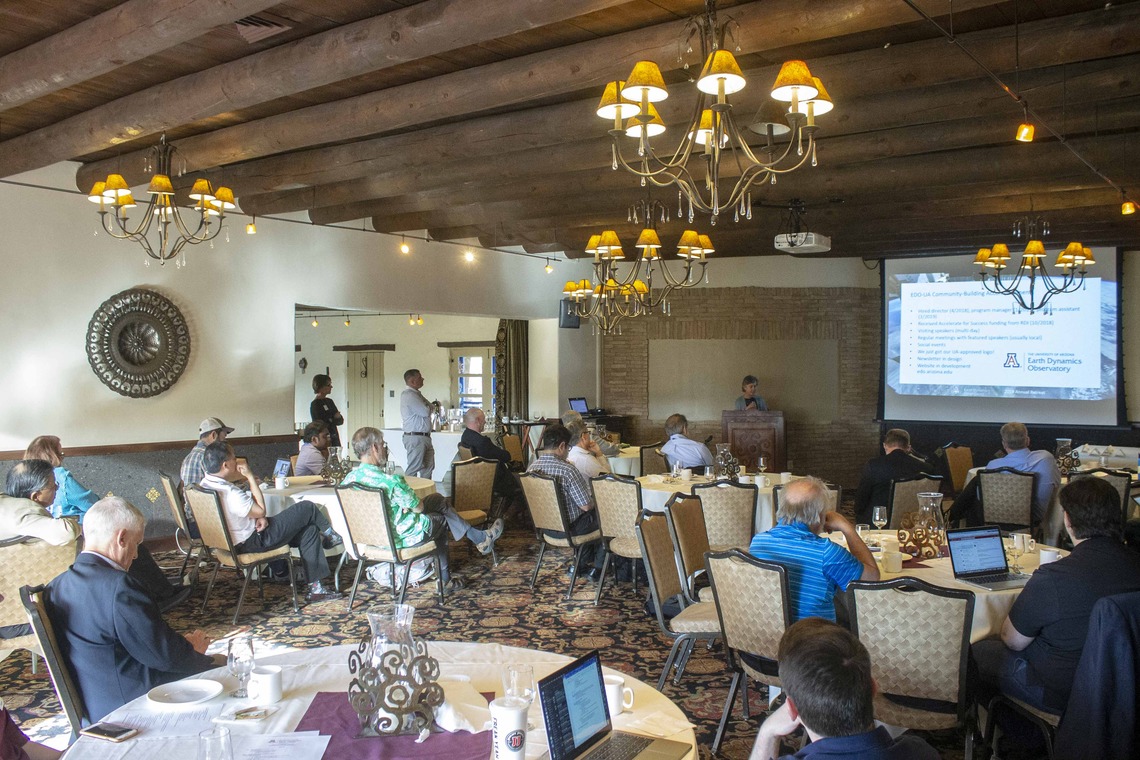Nearly 40 people attended the second annual EDO retreat on March 27 at the Hacienda del Sol Guest Ranch Resort. The event began with an hour of "speed talks," brief presentations of the many small— less than $10M—existing and proposed projects that EDO researchers are working on. They were followed by presentations on bigger projects, proposals,and opportunities, primarily NASA Earth Ventures- related but also including potential federal defense-related and industry partnership opportunities. All the presentations are available on Box. Bill Cutlip, recently retired NASA/Goddard business manager in the Earth sciences, then offered his perspective on how EDO can best succeed in working with NASA and strategize for future success. One tip: “‘Urgency’ should be a poster on everyone’s wall,” that is, your successful proposal must make a highly compelling argument for the urgency of the work.
Switching gears, the second half of the retreat focused on EDO activities and the initiative’s integration into the UA’s overall strategic plan. In the past year, EDO has hired its director (Jack Holt) and management staff (Betsy Woodhouse, program manager; and Reed Talbot, program assistant), held a number of events with guest and local speakers, supported a student design-to-launch initiative, and began to strengthen communications through the new
website and newsletter. More speaker and workshop events, as well as funding and other opportunities in support of collaboration and proposal work, are planned for the future, and new ideas are welcome!
The last segment of the retreat featured UA leaders from the Research, Discovery, and Innovation office; the Office of Strategic Initiatives; the research pillar of the UA Strategic Plan; the proposed Arizona Space Center/Institute; and the Future Earth initiative who discussed—with much audience participation— how these various initiatives are taking shape and integrating with each other and EDO. What does success look like for the initiatives? What resources are needed to achieve such success? How will they be organized? Clearly there are more questions than definitive answers at this point, but having all the relevant parties together prompted meaningful suggestions and observations as planning moves forward.


